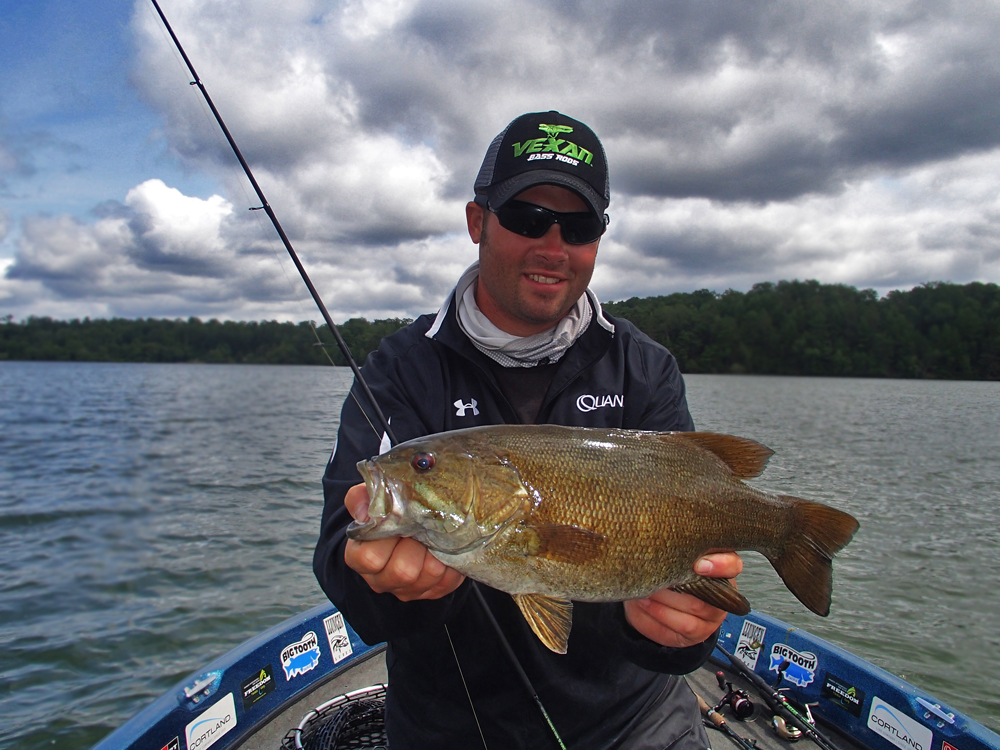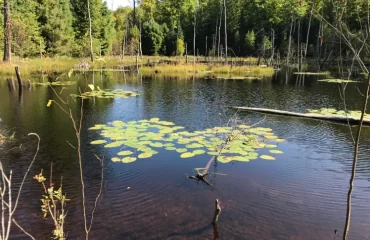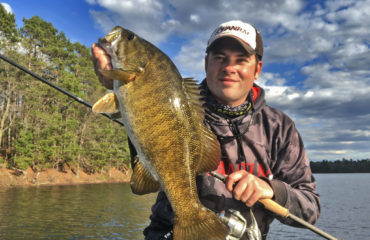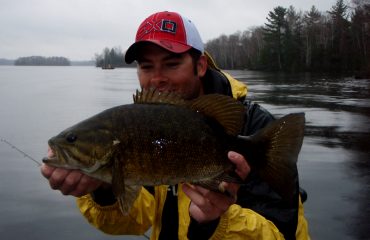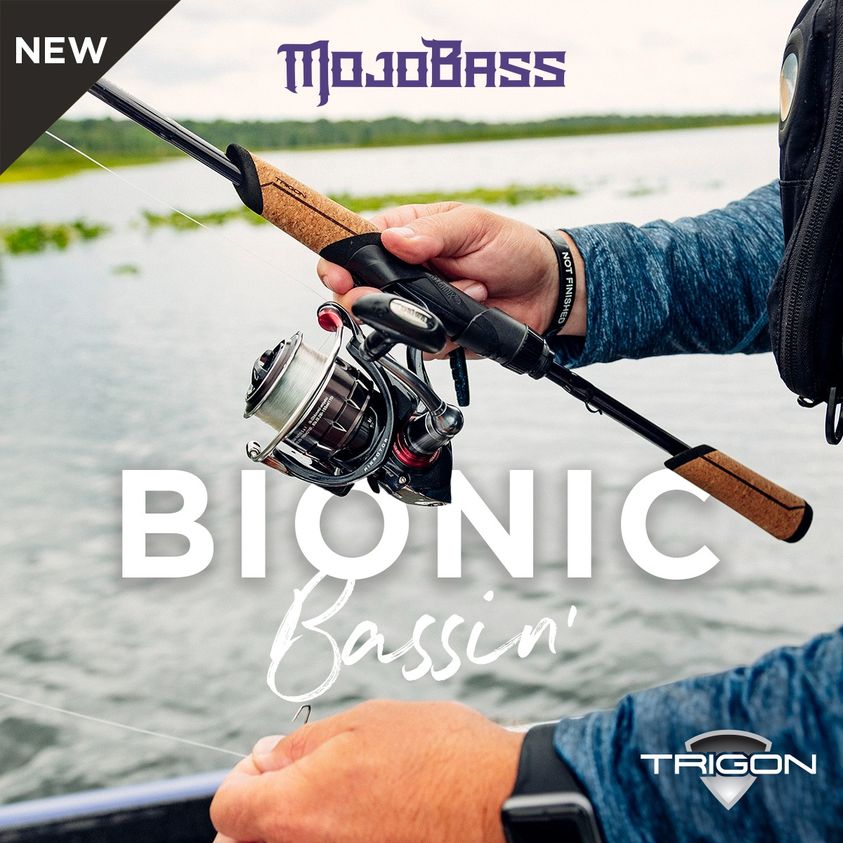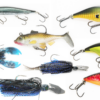Five Bass Fishing Philosophies
By Andrew Ragas
Philosophy is the study of general and fundamental problems concerning matters that encompasses knowledge, values, and reason. I don’t believe Pythagoras was a fisherman himself, but his thoughtful teachings are still being applied to scholars of all subjects, including fishing.
We read to absorb information, and therefore we are all scholars of fishing. In today’s informational age, we learn and absorb every piece of information and guidance that we can to help make us more successful at our craft and specialties. For my success in bass fishing, I have identified and applied a set of important values that I operate by on the water that have evolved me into the angler I have become. Take into consideration these few philosophies of mine, that they could help make you a better bass angler as well.
#1 – Camping Out For Bites
Some of my partners give me grief for fishing too slow and methodical. There is a reason for this madness, which has been developed over several years of patterning big bass and understanding their locations, feeding times, and behavior on many of the specific waters I fish. A strategy I sometimes employ is camping on spots. I focus on precise locations for long periods of time because I seek big bites, and the largest specimens in the lake that they attract.
Big bass are intelligent creatures, and the smallmouths I catch from Wisconsin’s inland lakes have been around for 20 years or more. During their lifetime they’ve seen a lot of lures, and have potentially been caught and released dozens of times. Outwitting their behavior and tendencies requires savvy skill and fishing methodology. Indentifying and locating big fish spots doesn’t happen overnight, or by the quick study of a lake map.
From nesting, to feeding, homing and wintering, big bass historically revisit and use the same specific locations of a lake for every year of their lifetime. Learning of a fish’s behavior and tendencies can require several years of patterning a lake and learning the lake’s history. More often than not the same patterns re-establish every season.
Big fish spots can be considered as high-percentage locations used annually by big bass. They may home on them for the duration of a season, or are revisited by that same specimen annually. These prime locations include complexes, humps, spawning flats, feeding areas, and pieces of structure such as rocks, boulders, and fish cribs that individual specimens would relate to. These are the types of locations I repeatedly fish for several minutes, or to an extreme, for hours at a time.
My camping philosophy often takes place during peak feeding and lunar periods, as well as spring staging and fall schooling scenarios when fish can be found in mass concentrations. It will also be done on specific locations that have yielded big bass annually.
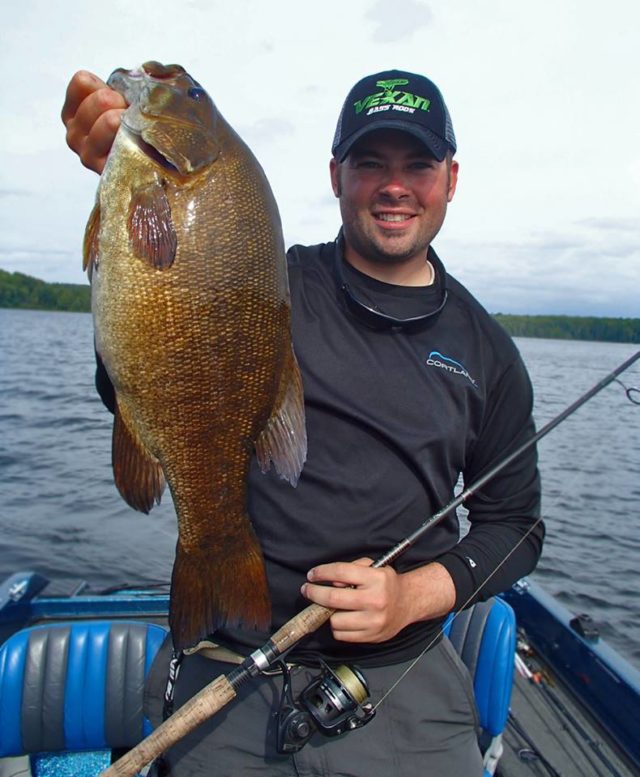
Patience is one of fishing’s greatest acquired skills. Seek big bites by fishing slow and methodically. Knowing when a big fish will visit and use a location and camping on these high percentage locations will result in big bites like this 5 and a half pounder.
For example, a year ago I hosted one of my best friends for a trophy hunt. We visited one of our favorite low density trophy fisheries and our strategy for the afternoon was to seek one bite. Most days at this fishery it is a smallmouth surpassing 5 lbs. or more. Our intentions were to target a minimal amount of spots, and to focus on high percentage areas that consistently yield big fish. We positioned my boat along the perimeter and drop-off of a mid-lake gravel hump topping off at 3 feet. On our first slow circle of casting around the 30 yard wide hump, I hooked and lost an estimated 5 pounder on a football jig. After losing that fish, I decided to camp us on that spot for 30 more minutes with hopes that same fish would strike again.
Most anglers would choose to return to that spot again in the day, or during a peak phase, weather change, or in altering conditions. That’s a wise alternative strategy, and if the plan is to spend a full day on the water, even better. But if fixated on one single bite like we were, and if the presence of a trophy is nearby, camp on that spot for however long it takes. We made 3 more passes around the hump, and my follow-up paid off. The same fish I lost minutes before struck a second time, a tube jig, and was captured. Thanks to similar experiences, I’ve learned a big bite can return at any time. It all depends on the boat’s patience, the fishes mood, and how willing you are to invest in extra time.
My camping strategy doesn’t pay off handsomely like this each time. It could prove to be futile, and there have been some occurrences I’ve died by it, especially if fish aren’t around.
There are times and scenarios when camping on spots won’t work. If the intentions are to catch several fish, it’s by far the worst to employ during major feeding windows in which several producing locations throughout the lake could have active fish. Another situation could be for practical time management purposes. Not every angler can afford spending hours on water. Therefore if short on time, speed fishing would be the better strategy. Lastly, if learning and breaking down a new fishery, especially large water, you cannot break down that fishery or a specific region of the lake by camping out on spots and fishing slow.
While camping out on spots annoys some of my partners and those who are impatient, the positives from my experiences outweigh the negatives of this philosophical tactic and fishing fundamental. This philosophy has resulted in lots of big bass and success over the years.
#2 – Don’t Leave Fish to Find Fish
What’s that old expression we’ve often heard? Don’t leave fish to find fish. It’s one of the most important values one could ever learn in fishing.
As a part time fishing guide, I’m often faced with this scenario. Should we leave active fish in favor of repeated success at other similar areas and locations?
Of similar philosophy to camping on spots, this philosophy has helped shape my trip planning and execution while out on the water. If the fishing is good, and you want to keep the momentum going, the best strategy is to do nothing. Don’t leave the area, and don’t adjust tactics. Bass move in and out of locations often. If a bite slows, my anticipation is the bite will eventually resume once again. If the spot isn’t conditioned, over-pressured, or exhausted, don’t leave the fish that are using it.
Leaving fish in order to find more fish is an uncalculated risk that can potentially be a big mistake. This strategy never comes with a guarantee. It can also potentially ruin or slow down what originally started out as a day’s successful outing. You might not be able to replicate the same rate of success by leaving fish to find others elsewhere on the lake.
When hosting my guests, I am paid to put them on fish, deliver their money’s worth, and to follow through on my routine of providing an educational and productive fishing experience for the duration of time they have booked my services and expertise. How I cater fishing trips is done according to my guest’s preferences though. Some anglers want to catch fish and care for nothing else, while others have objectives of learning a new lake and being shown new spots. My preference is to never waste a customer’s time and investment in me, so productivity is at the forefront of each day of fishing.
Besides guiding, and leisure fishing, the strategy seldom works out during pressure-filled tournament settings as we’ve witnessed anglers missing out on wins and earning checks. They were previously on fish, only to mysteriously motor along elsewhere and catch nothing. Leaving fish to find fish is a huge risk. The only good thing that comes from it is covering water, trying several spots, and to learn an entire lake.
Never leave a good bite in favor of greener pastures.
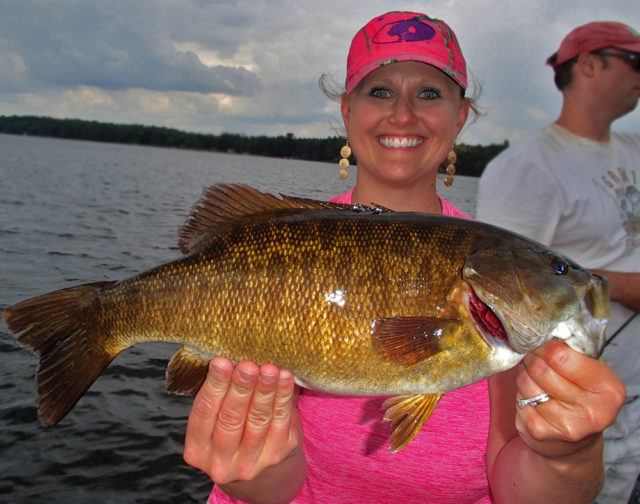
Live the moment and only look ahead if the bite ever slows and dissipates. Never leave a good bite and area of active bass to seek greener pastures elsewhere on the lake. Guide customer, Andrea Luszcak with one of over 60 bass we boated in July of 2017. Our strategy that day was not to leave active fish!
#3 – Establishing Patterns by the Process of Tackle Elimination
Employing this philosophy helps me establish patterns quicker than usual.
Not every bass angler needs up to 10 rods on their casting deck like I sometimes do, but each rod rigged with something different at first can help identify and establish patterns quickly, in addition to quickly altering presentations.
We can only use one rod at a time though. And when bass are only showing interest in a general lure category, I immediately experiment with other specific baits and similar presentations within that category. I then branch off into experimenting with variations of that lure type and the presentation that’s been working. For example if it’s a suspending jerkbait fish are showing an interest for, I may then tie on different variations of that lure category on 4 different rods to truly capitalize on a jerkbait bite. These variations may encompass different models, lengths, sizes, weights, diving depths, and color styles. Then, I will put all other unnecessary gear away because I’ve found what the fish want.
At this point, the process of elimination has taken place. I have established a pattern successfully. I then put away everything else into storage.
Many bass anglers tend to get carried away and overwhelmed with gear and tackle overload atop their front decks, in addition to prioritizing the wrong things in their fishing approach rather than focusing on tactics and approach. My process of tackle elimination during the establishment of a pattern reduces clutter and confusion, and makes me more successful. I have learned I am a more practical and efficient angler when I only have 4 or 5 rods on deck with baits that are working rather than 10 or more rods and dozens of lures scattered on deck that overcomplicates and would otherwise might not be working.
#4 – Running and Gunning is Overrated
Many of the best fisheries inhabited by smallmouth bass throughout the north are clear oligotrophic and mesotrophic lakes with high transparency. As a result, fish tend to spook more frequently, and their sensory organs that includes a lateral line and eye sight are more sensitive and responsive to disturbances and loud noise. On the clear waters I frequently fish, smallmouths can see for great distances, and will feel everything atop the surface above them. For these reasons, running and gunning from spot to spot isn’t the wisest of strategies.
The noise from outboards tears up the water, and shadow of a boat scares fish, driving them down to the sanctuary of greater depths increasing the probability of them being uncatchable.
Not only am I a slow fisherman, but I operate my boat in similar manners by idling and drifting into spots with stealth. By doing so, the wary and curious smallmouths remain catchable, and mostly unaware of invaders atop their spots.
Many bass anglers who practice run and gun tactics don’t efficiently fish spots the way they should be. Rather, quick travel and coverage of a spot is prioritized over dissecting it to ensure its potential and determining whether fish are actually there or not. Many anglers also don’t know how to use their electronics properly; neglecting electronics usage that includes mapping, charting, and marking fish. An adept angler would first slowly idle around the area to scan for fish with side imaging, then drop waypoints and icons on fish and pieces of structure, make reference of the boat’s distance away from the icons, and only then proceed to fish by casting to those icons and waypoints.
I preach anglers to have a purpose on every spot fished and pulled upon. Have a strategy, run a track and course between waypoints and along contours. Always map and scan over a spot prior to making your first cast. This leads to angling efficiency rather than being victimized by the thundering scare tactics of the run and gun.
#5 – Don’t be a Bank Beater
“I’m a shallow water guy. If I can’t catch them beating the bank, I’m probably not going to catch them. I just can’t make myself to fish offshore.”
I get angry every time I hear it. But then I realize the fish I focus on catching most often are the least pressured. So I will usually have them mostly to myself.
One of the biggest mistakes bass anglers make is their reliance and dependence on fishing shorelines, docks, and near-shore habitats. Don’t be a bank beater.
Old habits are hard to break. Most of the fishing pressure bass receive is near shorelines. Look over the shoulder, and you will learn the better smallmouth fishing in the entire lake is out towards that direction.
Smallmouth bass are primarily offshore and deep structure-oriented fish year-round, only to be found shallow, up on some shorelines, in spring and during specific summer and fall scenarios when food availability and water temperature is ideal. Smallmouths spend majority of their lives in deep water, away from shorelines. While smaller members of the population are least educated and tend to favor living in the shallows until they reach a certain age and homing preference, the largest members of most smallmouth populations will usually live deep where they will be least pressured and exploited.
Bank beating is impractical to consistent smallmouth bass success and limits the growth and evolution of an angler. What bank fixated anglers fail to understand is majority of the shorelines that are fished and beaten is mostly dead, unproductive water.
The biggest bass often utilize big fish spots, which tends to be deep structure and cover. In addition, they will roam open water to follow food. How do these traits and behavioral characteristics lead anglers to believe that bank beating is the solution? I often observe bank beaters on my lakes, in $80K boats equipped with state of the art technology and equipment. Sadly, I feel most shoreline anglers don’t have a comfort level, of exploring out into the open, beyond the shallow banks.
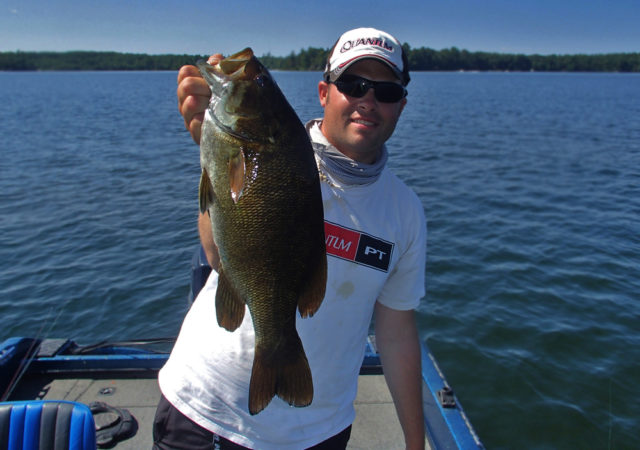
Don’t be a bank beater. Throughout the year, majority of the smallmouths my boat catches are from offshore mid-lake locations, located nowhere near shorelines.
While actual philosophers such as Pythagoras, Aristotle, Socrates and gang would pose more practical questions pertaining to life, bass anglers would be wise to examine similar values or different ones so they may establish their own philosophies to use as a personal handbook to angling success. Consider these fundamental fishing values of mine to help make you a more successful bass angler for seasons to come.


